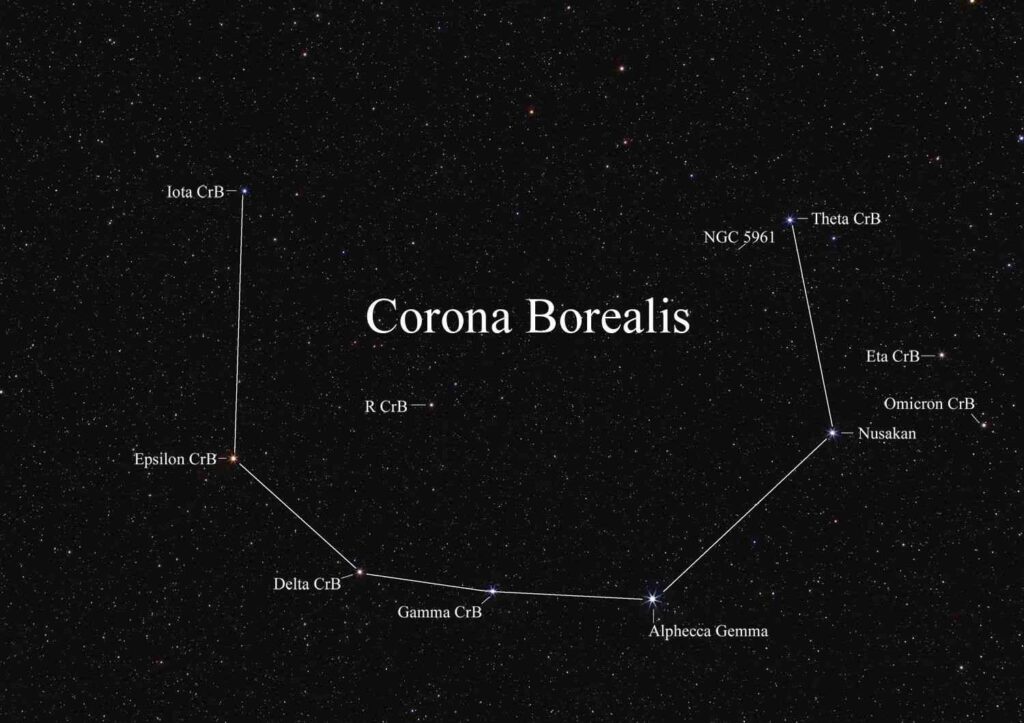
NASA says its Astronomers expect a “new star” to become visible in the night sky sometime between now and September. They promise it’ll be a once-in-a-lifetime celestial sight.
We have the nova, an expected brightening event, to thank for this. The nova will occur in the Milky Way’s Corona Borealis or Northern Crown constellation. It is located between the Boötes and Hercules constellations.
Unlike a supernova, which is the explosive death of a massive star, a nova refers to the sudden, brief explosion from a collapsed star known as a white dwarf.
T Coronae Borealis, aka the “Blaze Star,” is a binary system in the Corona Borealis. It includes a dead white dwarf star and an aging red giant star. Red giants form when stars run out of hydrogen for nuclear fusion and begin to die.
ALSO READ: Donald Trump Threatens “It’s Gonna Be a Bloodbath for the Country” if He Loses Election Bid
Astronomers say our sun will become a red giant in about 5 or 6 billion years. When it does, it will puff up and expand, releasing layers of material while evaporating the solar system’s inner planets. NASA does not know how that will affect Earth exactly.
Every 79 years or so, T Coronae Borealis experiences an explosive event. This is mostly because the stars in the orbiting pair are so close that they interact violently. The red giant becomes increasingly unstable over time as it heats up, shedding off its outer layers that land as matter on the white dwarf star.
The exchange of matter causes the atmosphere of the white dwarf to heat up slowly until it experiences a “runaway thermonuclear reaction.” This is what leads to a nova.
“Most novae happen unexpectedly, without warning,” said William J. Cooke, NASA Meteoroid Environments Office lead, in an email. “However, T Coronae Borealis is one of 10 recurring novae in the galaxy. We know from the last eruption back in 1946 that the star will get dimmer for just over a year before rapidly increasing in brightness. T Coronae Borealis began to dim in March of last year, so some researchers are expecting it to go nova between now and September. But the uncertainty as to when this will happen is several months — can’t do better than that with what we know now.”
T Coronae Borealis is located 3,000 light-years from Earth and is typically too dim to be observed with the naked eye. It is anticipated to reach a brightness level similar to that of Polaris or the North Star.
Once the nova peaks in brightness, it will seem as if a new star has appeared. One that can be visible for a few days without any equipment and a little over a week with binoculars. After that, it dims and disappears from sight for another 80 years or so.
Astronomers will observe the nova using the Hubble Space Telescope and the space-based Neil Gehrels Swift Observatory. They will also study the celestial event using X-ray and ultraviolet light.
POLL — Is Artificial Intelligence a Net Positive or Negative for Mankind?
According to Cooke, “Studying recurring novae like T Coronae Borealis helps us understand the mass transfer between the stars in these systems and provide insights into the thermonuclear runaway that occurs on the surface of the white dwarf when the star goes nova.”
The NASAUniverse account on X, formerly known as Twitter, will have updates on the outburst and its appearance. This will be the second Nova Cooke has experienced.
The last one he witnessed was Nova Cygni in 1975. According to him, it had a brightness similar to that expected from T Coronae Borealis. He will not witness Nova Cygni exploding again in his lifetime.
ALSO READ: These Are the Symptoms and Risk Factors Associated With Sarcoidosis
“I was a teenage astronomy geek about to start college and was outside on the night of August 29,” Cooke said. “Glancing at the sky, I noticed that the constellation of Cygnus was messed up. There was a star that shouldn’t be there. After enduring some comments from friends who thought I was crazy, I got them to look, and we realized that we were looking at a nova! It was a very memorable experience and reinforced my choice of astronomy as a career. I used to joke that a star had to explode in order to get me to suffer through undergraduate physics.”
You Might Also Like:
Atlanta Company Fines Woman After Demolishing Her Home
Texas Woman Claims She Shot Man Who Drugged and Kidnapped Her
NBC Scraps Two Reality Shows Amid Programming Shakeup
